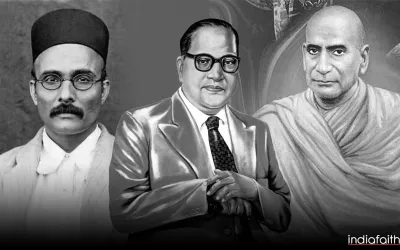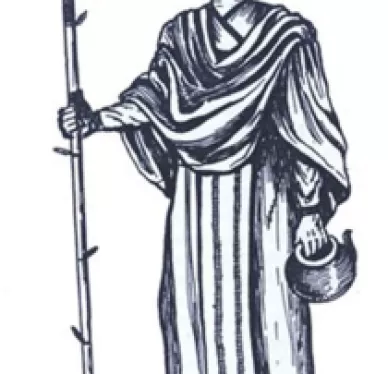March 11, 1689, marks a pivotal moment in Indian history, a day that witnessed the sacrifice of a valiant warrior whose bravery and resilience continue to inspire generations. Sambhaji, the son of the legendary king Shivaji, met his end in a manner that not only etched his name in the annals of history but also altered the course of Indian destiny.
Following the demise of the great king Shivaji in 1680, the fledgling Maratha kingdom faced formidable challenges. The Mughal Emperor Aurangzeb, perturbed and humiliated by his encounters with the Marathas and the indomitable spirit of Shivaji, unleashed a wave of fanaticism and repression across South Asia. Religious intolerance and discriminatory policies, such as the imposition of the jaziya tax and the demolition of Hindu temples, further fueled the flames of resistance among the populace. Despite the loss of their charismatic leader, Shivaji, the Marathas refused to yield to Aurangzeb's tyranny. Under the leadership of Sambhaji, they continued their courageous struggle for freedom and dignity. Sambhaji's daring exploits, including the defiance of the Mughal forces and the sheltering of Aurangzeb's own son, Akbar, exemplified the Marathas' unwavering commitment to their cause.
The ensuing years saw a relentless war of attrition between the Marathas and the Mughals, characterized by fierce battles and sieges across the rugged terrain of western India. Sambhaji, though renowned for his courage and valor, was also known for his impetuous nature and ruthless treatment of dissenters within his kingdom. However, his steadfast determination to resist oppression inspired countless souls to join the struggle against Aurangzeb's tyranny. In 1689, the tide of the conflict took a fateful turn. Sambhaji, unaware of the imminent danger, found himself surrounded by Mughal forces at Sangameshwar. Despite putting up a valiant defense, he was eventually captured and brought before Aurangzeb's court, where he faced unimaginable torture and humiliation. Accounts from both Persian and Maratha sources paint a harrowing picture of Sambhaji's ordeal. Refusing to capitulate to Aurangzeb's demands, he endured unspeakable torture, including the mutilation of his body and the removal of his eyes, tongue, and nails. Even in the face of agonizing pain, Sambhaji remained resolute, refusing to renounce his faith or betray his people. Sambhaji met his end with unparalleled bravery, reportedly torn apart by 'Wagh Nakhe' (Tiger claws) and beheaded with an axe. His severed head was displayed as a grim warning to potential dissenters, but his martyrdom only served to galvanize the resistance against Aurangzeb's tyranny. The news of Sambhaji's death sent shockwaves throughout the land, igniting a wave of outrage and defiance among the Marathas. His brother, Rajaram, took up the mantle of leadership, continuing the struggle against the Mughals from the fortress of Jinji.
Sambhaji's sacrifice symbolized the resilience and determination of the Indian people in the face of oppression. His steadfast adherence to his principles and his unwavering commitment to his faith earned him the title of 'Dharamveer' – the warrior of Dharma. In the aftermath of Sambhaji's death, the Maratha resistance only grew stronger, eventually leading to the downfall of the Mughal Empire. Aurangzeb's long and futile struggle against the Marathas ended in despair, paving the way for the rise of the Maratha Hindu empire. Sambhaji's legacy serves as a beacon of hope and inspiration for future generations, reminding us of the power of courage, resilience, and unwavering faith in the face of adversity. His heroic sacrifice will forever be etched in the annals of Indian history, a testament to the triumph of the human spirit against oppression and injustice.
In the grand tapestry of Indian history, Sambhaji stands as a towering figure, a symbol of courage, resilience, and unwavering commitment to principles. The tragic demise of Sambhaji on March 11, 1689, is not merely a historical event but a poignant symbol of resistance against oppression. His defiance in the face of adversity continues to resonate, urging us to reflect on the enduring struggle for autonomy and dignity. On this solemn occasion, pay tribute to Sambhaji and the countless unsung heroes who have sacrificed everything for the noble cause of freedom. Their legacy serves as a beacon of hope, reminding us that the fight for justice is eternal and worth every sacrifice. In conclusion, Sambhaji Maharaj's life serves as a powerful symbol within the context of Hindutva and Hindu religion. His unwavering commitment to defending Hinduism against external threats and his valiant resistance against oppression embody the spirit of Hindutva, which emphasizes the preservation and promotion of Hindu culture, values, and heritage. Sambhaji's steadfastness in the face of adversity, his dedication to the cause of Hindu sovereignty, and his willingness to sacrifice his life for the protection of his faith inspire generations of Hindus. His legacy reinforces the narrative of Hindu resilience and valor, providing a historical example of resistance against foreign domination and religious persecution.
Furthermore, Sambhaji's martyrdom at the hands of the Mughal Empire underscores the importance of unity and solidarity among Hindus in the face of external aggression. His defiance against tyranny serves as a reminder of the importance of upholding Hindu principles of righteousness and justice. Overall, Sambhaji Maharaj's life exemplifies the ideals of Hindutva and embodies the essence of Hindu dharma. His legacy continues to inspire millions of Hindus worldwide, reinforcing their sense of pride and identity in their religion and culture.






Comments
Add new comment